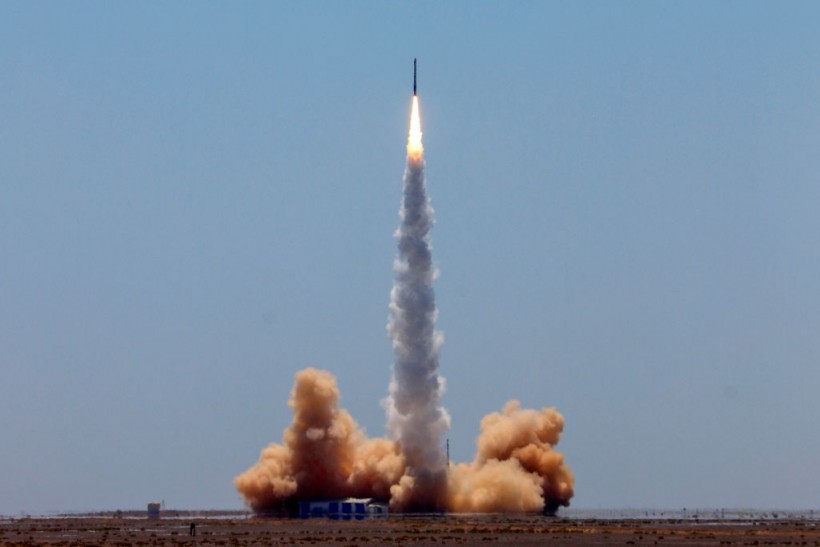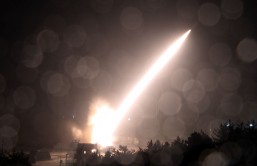
(Photo : STR/AFP via Getty Images)
Chinese anti-satellite (ASAT) capability in space surpasses the US that covers the offensive and defensive using the latest microwave technology.
Chinese anti-satellite (ASAT) capability is needed once space is militarized, and Beijing is seizing the initiative to beat the US in this aspect.
The placing of the Chinese space station Tiangong has alarmed NASA that China might be on its way to surpassing the US in space. New technologies applicable in space are at the forefront of a brand-new space race.
Countermeasures To Stop DEWs
Direct energy weapons (DEWs) have accelerated between the US and Japan, emphasizing space use. Reports that Chinese scientists are onto a kind of electronic shielding that hardens its satellites from high-powered microwave weapons, noted SCMP.
A scientist from the China Academy of Space Technology (CAST) mentioned that the technology has passed ground testing and used some space equipment, reported the EurAsian Times.
Countermeasures developed to stop the effects of DEWs on crucial electronics are important as the stakes are higher. An antenna usually generates the signal to attack a satellite in orbit to cause it to malfunction. This was stated by Li Wendong, a research engineer at CAST.
Fears exist that any power beaming device could transform solar rays into microwaves targeted at specific points in space. It could be used for space-type weaponry, but that depends on the research and development. DEWs are for defense in space, specifically Chinese and Russian anti-satellite (ASAT) equipment. Developers are thinking about how it fits in future developments.
Competition in space is spawning accusations between superpowers, but Russian ASAT and robotic armatures of China threaten assets, including China ASAT Capability.
According to Space News, the Tiangong will be completed in 2022, with about 50 launches expected from Beijing's space program in five years.
Microwave Technology Could Evade Jamming
To keep in defense and offense with microwave technology, a side-by-side development of offensive DEWs is underway. Like a Star Wars having super-powered rays of microwave of enormous megawatts used to fry the electronics of cruise missiles or cause avionic aircraft to fail, these are non-kinetic attacks limited by the available power source.
Testing was done by researchers using a device like a wide antenna which is 30-meters wide, but a total of 1-gigawatt is enough to attack a shield satellite. Several intensities of microwave projection were tested as well.
The team thinks their space base DEWs weapon with a wide beam about 19 miles from afar will work. It works by identifying an energy attack, canceling the destructive energy before reaching the satellite, and keeping it working.
Li added another device included in the satellite electronics that could cause problems in functioning correctly, but the issue was resolved, and this top-secret tech will be used in the future.
One more benefit of the new tech is still linking the satellite even under assault by energy weapons like an electromagnetic pulse. It allows a vehicle to work still and stay in contact with control through an attacking system is shifting to avoid jamming.
Li and other scientists are developing hardening systems from a microwave or electromagnetic attack and systems for dedicated energy attacks, especially those that sniff out attacks that try to evade jamming. The US military claims powerful lasers will be in space and on the ground by 2025, and one more claim is these small lasers will be on satellites.
Related Article: How an F-15 Eagle Shoots down a Satellite on September 13, 1985








